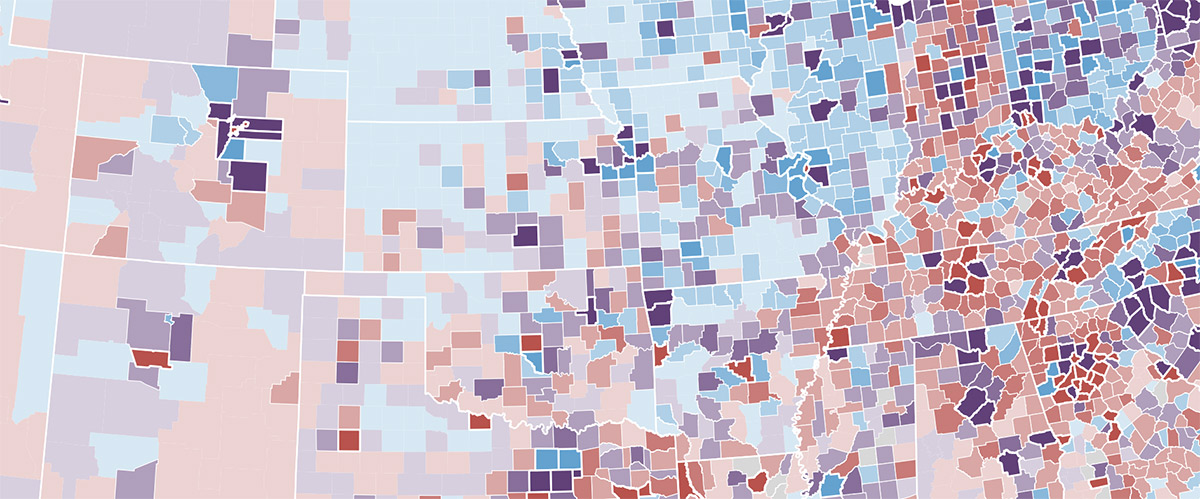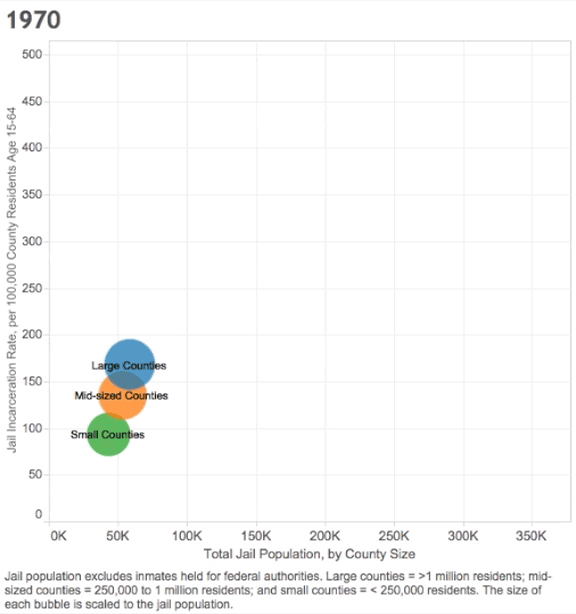Collaboration Incarceration Trends January 29, 2016
Crime and punishment are generally perceived to be urban problems, not rural ones. This is not surprising considering that the largest jails — such as New York City’s Rikers Island and the Los Angeles County Jail — get the most nationwide attention. But would it surprise you to find out that small counties are the places where jails have grown the most, and are where nearly half of our nation’s jail inmates are now held?
Last month, the Vera Institute of Justice released In Our Own Backyard: Confronting Growth and Disparities in American Jails. The headline finding of the report is that small counties (those with fewer than 250,000 residents) have contributed the most to the four-fold nationwide growth of the jail population since 1970. The jail populations of small counties have increased by 6.9 times since 1970, far exceeding the pace of growth of 4.1 times in mid-sized counties (those with 250,000 to 1 million residents), and 2.8 times in large counties (those with more than 1 million residents). Smaller counties together now hold 44 percent of the nation’s jail inmates — a significant change since 1970, when they held only 28 percent. If jails in small counties grew at only the rate of mid-sized counties, there would be 120,000 fewer individuals incarcerated in jails today.
The animated image below illustrates that small, mid-sized, and large counties each trended upwards at roughly the same rate until 2000, when the incarceration rate in small counties continued to grow, as it subsided in large and mid-sized counties. The “bubbles” are used to group data for large, mid-sized, and small counties and are scaled to the number of incarcerated individuals.
For more, you can investigate these trends for each state in this data visualization.
Since we released the report, many have asked us the same question: “Why have jails in the smallest counties grown the most?” We have only begun to investigate the possible answers to this question. It could be because larger counties have a wider tax base to draw on to fund health and social service programs to address needs that otherwise would land people in jail, or because the spotlight on the largest jails has helped to suppress their growth. In fact, it is jails in large and mid-sized counties — such as New York City, Bernalillo County, NM, Hampden County, MA, and New Orleans, LA — where jail populations have been most likely to decline in recent years.
But while the cause of this trend isn’t clear, its implications are: Reform is necessary in all counties — not just the largest — to end the misuse of jails in America. This is why the small jurisdictions participating in jail reduction efforts as part of the MacArthur Foundation’s Safety and Justice Challenge — such as Pennington, South Dakota, and Mesa, Colorado — are just as instrumental to ending our overuse of incarceration as the large ones, like Houston and Chicago. And data is fundamental to reform. Vera’s new report is a publication of our Incarceration Trends Project, the centerpiece of which is a new data tool that collates and analyzes publicly available, but disparately located, jail data dating back to 1970 for every one of the approximately 3,000 U.S. counties. The tool can be used to explore your own county’s data, including jail population, admissions, and length of stay, and how these trends compare to those of similarly situated counties.
No one formula can tell us what size each jail should be. But the wide variation in incarceration rates among counties that are otherwise similar indicates that the number of people behind bars is not inevitable, but largely the result of choices in policy and practice. With new information about our jail trends in hand, communities large and small can begin to make better informed choices.
This post originally appeared on Medium.com.



